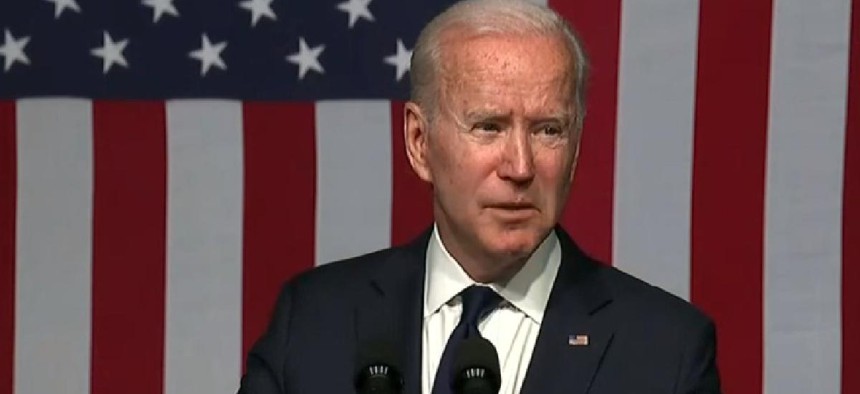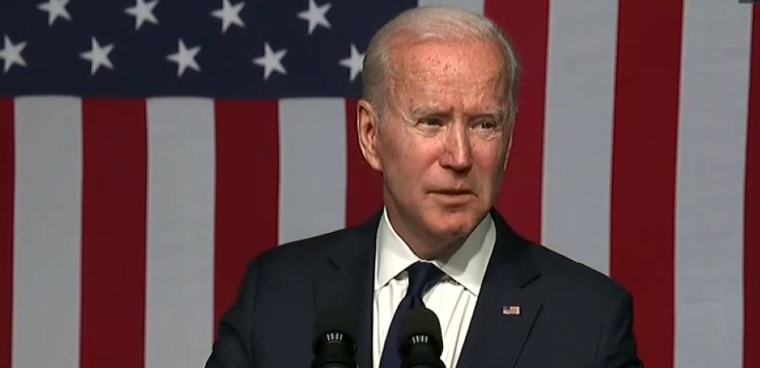White House instructs agencies on contracting equity goals

The Biden administration detailed policy pivots needed to fulfill a commitment to steer $100 billion in federal contracting opportunities to small disadvantaged businesses over the next five years.

President Joe Biden announced his contracting equity policy goals in a June 1 speech in Tulsa commemorating the 100th anniversary of the Tulsa Race Massacre
The Biden administration is looking to make good on a commitment to steer $100 billion in federal contracting opportunities to small disadvantaged businesses (SDBs) over the next five years.
A Dec. 3 memorandum from Jason Miller, deputy director for management of the Office of Management and Budget, spells out some benchmarks and details to help agencies hit the target of expanding the share of contracts awarded to SDBs to 15% by 2025, up from about 10% currently.
"The president has set a policy of using federal contract spending to support small businesses and advance equity," Miller wrote. "These actions will help to increase spending to underserved communities and to broaden participation from within these communities."
The memorandum instructs agencies to implement five management actions as part of the administration’s executive order titled Advancing Racial equity and Support for Underserved Communities through the Federal Government.
Agencies should work with the Small Business Administration (SBA) to establish agency-specific contracting goals for fiscal year 2022 to increase SDBs share of contract awards to at least 11% of the total, as well as increasing the number of new entrants to the federal marketplace and reversing overall declines in the small business supplier base rate.
The memo also announces changes to the federal government’s category management strategy -- buying common items in bulk to leverage the federal government’s spending power -- to grow opportunities for SDBs. According to the memo, SDBs “have received a proportionally lower share of spending under category management than other spending.”
OMB’s category management guidance has been revised to remind agencies that “category management plans shall not prioritize spending on ‘Best in Class’ solutions at the expense of meeting socioeconomic small business goals and providing maximum practicable opportunity to small businesses.”
The Dec. 3 memo also adds meeting small business contracting targets as a performance plan goal for “key” senior executive service members, including chief acquisition officers, directors of offices SBD utilization and other officials with authority over contracting activities.
Speaking Thursday at PSC’s Federal Market Forecast conference, Federal Acquisition Service Commissioner Sonny Hashmi said the government must find ways “to make it easier for new suppliers, especially small businesses, to join the federal marketplace.”
Hashmi said a critical component in adding new entrants to the federal marketplace and addressing other issues like ongoing supply chain disruptions spurred by the pandemic involved improving the government’s data environment so agencies and key stakeholders have access to real-time information “so they can make the best acquisition decisions in line with their needs.”
OMB said it will work with agencies to develop new entrant management tools, in addition to providing enhanced data analytic capabilities and improved data management on demographic and geographic workforce information, along with SBA and the General Services Administration (GSA). The memorandum noted a significant decline in the amount of new small business entrants to federal procurement, with one report showing a 79% decrease from 2005 to 2019.
OMB also revised its previous guidance issued in a category management memorandum earlier this year to further encourage the workforce to "pursue the best acquisition strategy for reaching underserved small business communities" by maximizing awards issued to socioeconomic small businesses.
An OMB report released in August which identified major barriers preventing underserved communities from accessing federal services said "meaningful stakeholder engagement" was required in order to design new programs for people and businesses within those communities, including SDBs.
The memorandum also encourages agency equity teams established under the executive order to pursue additional methods to engage potential new entrants, including holding regular meetings with program managers of new socioeconomic small businesses and strengthening oversight of prime contractor reporting of subcontracting plans and goals.
Experts previously told FCW enhanced oversight of subcontracting opportunities would be crucial in any effort to advance equity through federal contracting.



